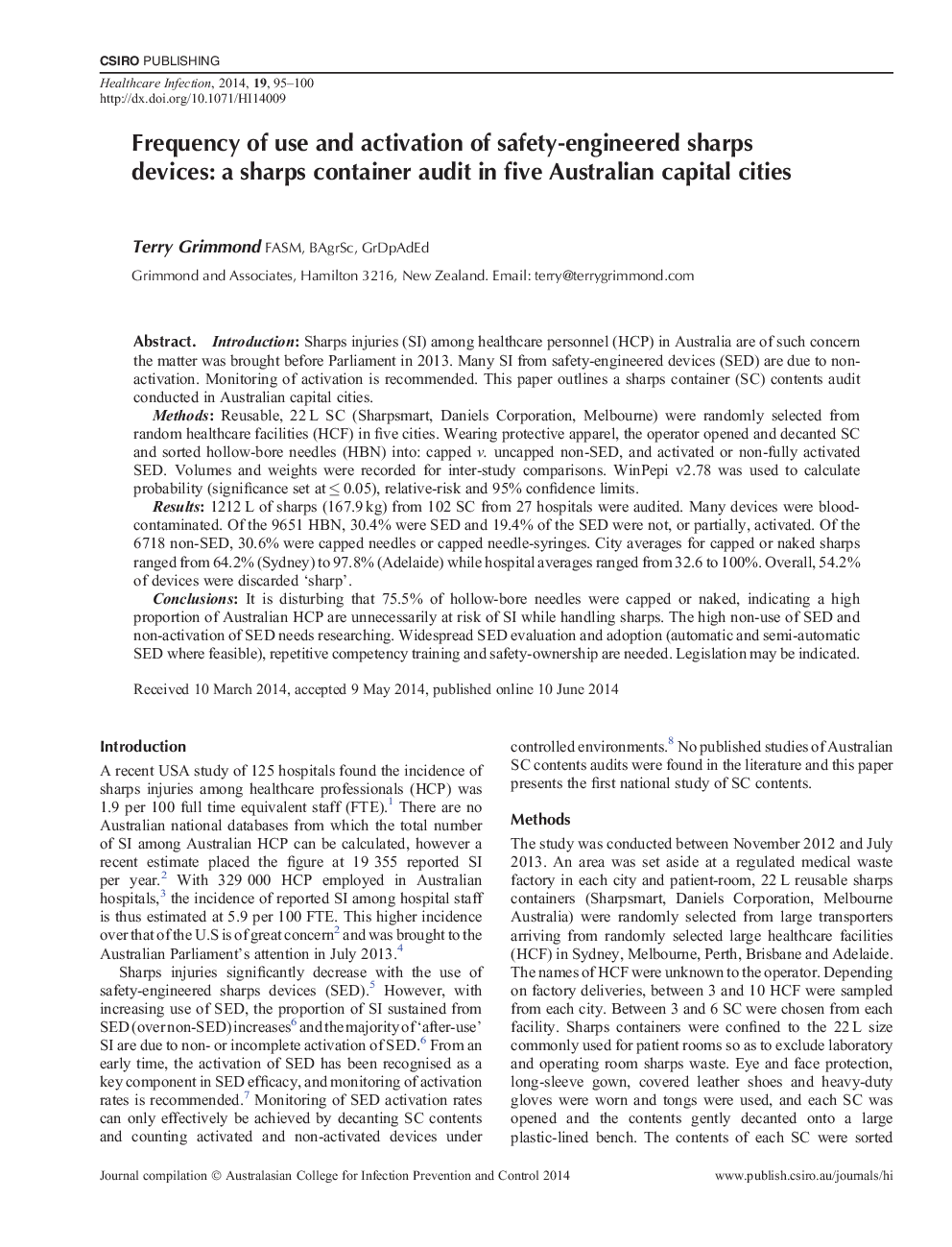| Article ID | Journal | Published Year | Pages | File Type |
|---|---|---|---|---|
| 2679560 | Healthcare infection | 2014 | 6 Pages |
IntroductionSharps injuries (SI) among healthcare personnel (HCP) in Australia are of such concern the matter was brought before Parliament in 2013. Many SI from safety-engineered devices (SED) are due to nonactivation. Monitoring of activation is recommended. This paper outlines a sharps container (SC) contents audit conducted in Australian capital cities.MethodsReusable, 22 L SC (Sharpsmart, Daniels Corporation, Melbourne) were randomly selected from random healthcare facilities (HCF) in five cities. Wearing protective apparel, the operator opened and decanted SC and sorted hollow-bore needles (HBN) into: capped v. uncapped non-SED, and activated or non-fully activated SED. Volumes and weights were recorded for inter-study comparisons. WinPepi v2.78 was used to calculate probability (significance set at ≤ 0.05), relative-risk and 95% confidence limits.Results1212 L of sharps (167.9 kg) from 102 SC from 27 hospitals were audited. Many devices were bloodcontaminated. Of the 9651 HBN, 30.4% were SED and 19.4% of the SED were not, or partially, activated. Of the 6718 non-SED, 30.6% were capped needles or capped needle-syringes. City averages for capped or naked sharps ranged from 64.2% (Sydney) to 97.8% (Adelaide) while hospital averages ranged from 32.6 to 100%. Overall, 54.2% of devices were discarded ‘sharp’.ConclusionsIt is disturbing that 75.5% of hollow-bore needles were capped or naked, indicating a high proportion of Australian HCP are unnecessarily at risk of SI while handling sharps. The high non-use of SED and non-activation of SED needs researching.Widespread SED evaluation and adoption (automatic and semi-automatic SED where feasible), repetitive competency training and safety-ownership are needed. Legislation may be indicated.
